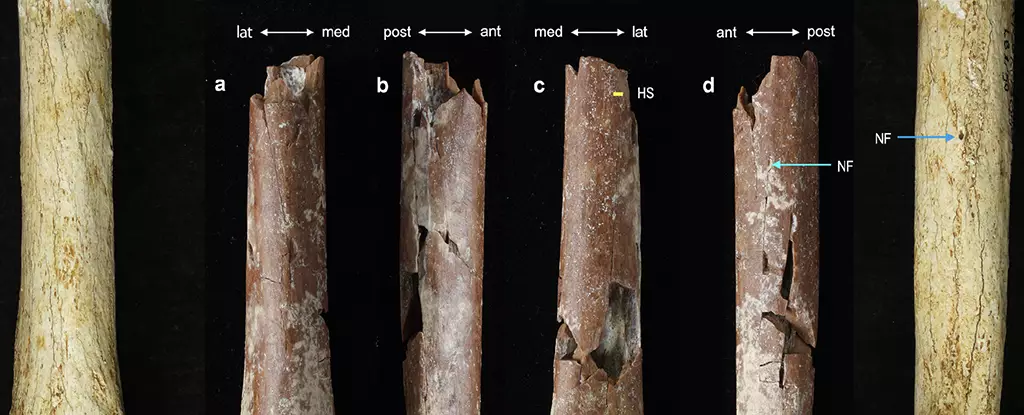The discovery of Homo floresiensis, also known as ‘hobbits’, has shed light on the existence of one of the smallest human species to have ever lived on Earth. Recent findings have revealed that some of these ancient human relatives might have been even smaller than previously thought. A 700,000-year-old fragment of an adult humerus unearthed in 2013 has been identified as belonging to an early member of the ‘hobbit’ lineage. This tiny upper arm bone, the smallest ever found in the hominin fossil record, challenges our understanding of the physical characteristics of these ancient humans.
The discovery of the adult humerus at the open-air site of Mata Menge on the Indonesian island of Flores has provided researchers with valuable insights into the early evolution of Homo floresiensis. By analyzing microscopic structures within the bone, researchers were able to determine that it belonged to an adult individual, rather than a child. The size and arrangement of osteons in the bone indicated that the owner was just 1 meter (3 feet and 3 inches) tall, making them even smaller than the famous ‘hobbit’ skeleton found in Liang Bua cave in 2003. This new finding challenges previous assumptions about the size of the ancestors of Homo floresiensis and paints a clearer picture of their diminutive stature.
The small teeth discovered at the Mata Menge site provide further clues about the evolutionary history of Homo floresiensis. These teeth, along with the adult humerus, suggest that this species may have descended from a population of Homo erectus from Java, rather than from a more ancestral African species as previously hypothesized. The evidence points to a scenario where a group of early Asian hominins, such as Homo erectus, became isolated on the island of Flores around one million years ago. Over time, these isolated individuals underwent a dramatic reduction in body size, eventually giving rise to the tiny ‘hobbits’ that once inhabited the island.
The unique environmental conditions of the Indonesian island of Flores may have played a significant role in the evolution of Homo floresiensis. Similar to many island species that exhibit reduced body size, the ‘hobbits’ may have experienced selective pressures that favored smaller stature. This adaptation to island living may have occurred multiple times throughout the evolutionary history of the Flores hominins, leading to the development of a distinctively tiny human species. Despite sharing the island with modern small-statured populations like the Rampasasa, genetic studies have not found a direct link between these groups and Homo floresiensis.
The discovery of the tiny human ancestors that once roamed Flores has opened up new avenues for research into the evolution of Homo floresiensis. By uncovering the remains of these ancient ‘hobbits’ and studying their unique physical characteristics, researchers are piecing together the story of a remarkable human species that lived alongside us until relatively recently. The mysteries surrounding the origins and evolution of Homo floresiensis continue to fascinate scientists and provide valuable insights into the diversity of human ancestors that once populated our planet.

Leave a Reply